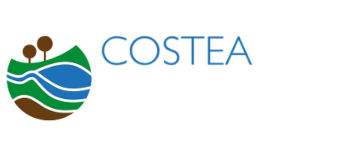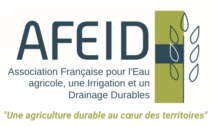Cette base documentaire a pour but de mettre à disposition la littérature grise relative aux différentes thématiques abordées dans les actions que nous portons. Elle est principalement constituée des documents collectés et/ou utilisés par le réseau COSTEA dans le cadre de la mise en œuvre de nos actions. Elle comporte des rapports d’étude, documents stratégiques, rapports d’activités, fiches techniques, articles scientifiques, thèses, articles de presse, livres, textes de loi etc. Cette base documentaire est régulièrement complétée au rythme de la mise en œuvre et de l’avancée de nos actions
Ces références bibliographiques externes aux productions COSTEA sont partagées et mises en commun à titre collaboratif. Leur contenu n’engage pas la responsabilité du COSTEA
Type de document
Thèmes
Localisation
Langue
Année de publication
groundwater recharge is generally low, leading to groundwater degradation. State responses are seldom effective in addressing this issue, which leads to fatalist narratives of the unsustainability of profitable agricultural growth and the collapse of aquifers. We argue that such narratives make it difficult to recognise more promising instances in which communities find solutions to groundwater degradation. We call for a fine-grained analysis of the social practices around the use of groundwater, which, we argue, represent a process of commoning. We do so while recognising that the collective action of communities is embedded in an intricate set of relations with other stakeholders including the state, and that the positive environmental and transformative social change that is often associated with commoning cannot be taken for granted at the outset. Building on the case of the arid Drâa Valley in Morocco where watermelon production has expanded rapidly, we illustrate how the process of commoning evolves through different social practices, including: 1) the use of new farming practices that reveal the potential of the aquifer; 2) the representation of the aquifer as severely degraded and the development of a narrative around
it being a collective good to be protected against outsiders; 3) the defining and negotiating of rules to control groundwater access and use; and 4) the engagement in negotiations and the resolving of conflicts. Our analysis shows that commoning, as performed by young local farmers, is about extending the lifespan of the aquifer for agricultural production rather than preserving it indefinitely; however, an examination of commoning practices also reveals the capacity of the community to change the course of the future.
de régulation des crues pour protéger les secteurs aménagés et les villes, les collectivités riveraines les considèrent comme des espaces productifs, défavorisés par les crues. L’étude montre des visions contrastées des services écosystémiques, où chaque acteur a une vision utilitariste des merjas. Malgré le débat international sur la biodiversité et le stockage de carbone dans les zones humides, les dimensions
écologiques sont peu citées. L’approche par les services écosystémiques dévoile les antagonismes entre acteurs, mais peut être un moyen de négociation sur le devenir des merjas dans une vision territoriale
of Agronomy, Yezin Agricultural University, Myanmar, in the wet season from June to October 2016. Two different organic manures (compost and cow dung) and control (no manure), and two rice varieties; Manawthukha (135 days) and IR-50 (115 days), were tested. The results showed that cumulative CH4 emission from Manawthukha (1.084 g CH4 kg-1 soil) was significantly higher than that from IR-50 (0.683 g CH4 kg-1 soil) (P<0.0046) with yield increase (P<0.0164) because of the longer growth duration of the former. In contrast, higher cumulative nitrous oxide emissions were found for IR-50 (2.644 mg N2O kg-1 soil) than for Manawthukha (2.585 mg N2O kg-1 soil). However, IR-50 showed less global warming potential (GWP) than Manawthukha (P<0.0050). Although not significant, the numerically lowest CH4 and N2O emissions were observed in the cow dung manure treatment (0.808 g CH4 kg-1 soil, 2.135 mg N2O kg-1 soil) compared to those of the control and compost. To determine the effect of water management and organic manures on greenhouse gas emissions, second pot experiments were conducted in Madaya township during the dry and wet seasons from February to October 2017. Two water management practices {continuous flooding (CF) and alternate wetting and drying (AWD)} and four cow dung manure rates {(1) 0 (2) 2.5 t ha-1 (3) 5 t ha-1 (4) 7.5 t ha-1} were tested. The different cow dung manure rates did not significantly affect grain yield or greenhouse gas emissions in this experiment. Across the manure treatments, AWD irrigation significantly reduced CH4 emissions by 70% during the dry season and 66% during the wet season. Although a relativeincrease in N2O emissions under AWD was observed in both rice seasons, the global warming potential was significantly reduced in AWD compared to CF in both seasons (P<0.0002, P<0.0000) according to reduced emission in CH4. Therefore, AWD is the effective mitigation practice for reducing GWP without compromising rice yield while manure amendment had no significant effect on GHG emission from paddy rice field. Besides, AWD saved water about 10% in dry season and 19% in wet season.
dans la commune d’El-Ghrous, wilaya de Biskra (Algérie), caractérisée par une forte croissance de la production maraîchère et phoenicicole, durant les deux dernières décennies. L’échantillonnage s’est fait selon une approche spatiale, basé sur un zonage raisonné, de manière à avoir des personnes répartis sur toute la commune. L’enquête a été effectuée durant les périodes 2013 et 2016/2017. Cette analyse fait ressortir trois principaux résultats : (i) le contrat de métayage, dans ce contexte, n’est qu’un simple contrat de travail sans dimension foncière où le métayer n’apporte que sa force de travail et de son expertise (savoir-faire) ; il n’a aucun pouvoir de décisions dans la ferme ; (ii) Les termes du contrat du métayage sont connus et acceptés par tous les acteurs ce qui réduit la marge de négociation et de modification de ces termes ; et (iii) Et la mobilisation de la coutume et des règles locales ont rendu le contrat du métayage plus efficace et moins conflictuel. Cependant, la rareté de la main d’œuvre agricole, affectant plus spécialement le maraîchage sous serre, pourrait faire évoluer les termes de contrats de métayage au profit des exploitants tout en leur conférant plus de pouvoir de décision.



